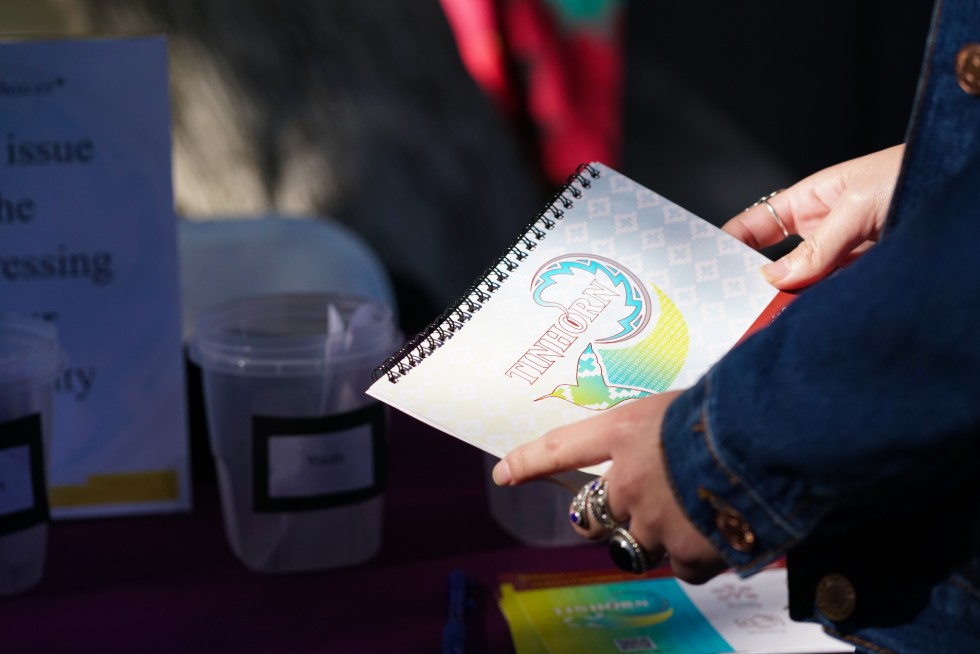
by Tinhorn Consulting | Apr 16, 2023 | Native Issues
In a poll recently conducted by Tinhorn Consulting, Arizona tribal entities weighed in and identified the top issues they faced (in order): 1. Infrastructure; 2. workforce development and education (tied); 4. culture; 5. healthcare; 6. youth; and 7. elders.
By conducting this poll, Tinhorn Consulting wanted to understand the issues and tackle solutions.
When asked how Tinhorn Consulting’s services might help, participants emphasized the need for a plan (strategic planning), more ‘how-to’ and ‘hands-on’ approaches (training and facilitation), and information about available resources (marketing). Of the four services offered by Tinhorn Consulting, strategic planning was the most common choice selected at 39%, followed by training and facilitation at 37%, tribal connecting at 18% and marketing at 3%.
Overall, participants focused on the need for community input and involvement; more inclusive training; a need for connection – within and outside of the community; and most critical — sharing information and increasing awareness. As I deliberated over the comments, I recognized the common factor underlying all the issues and solutions: information. Organized information; how-to information; information about goods and services; and contact information to connect to those who can help.
Information is power. Sharing information can counter negative perceptions and distrust. Sharing information can help solve problems. Sharing information can be healing. Sharing information helps to move the needle forward.
At Tinhorn, my aim is to help tribal clients tackle issues and self-identify solutions that include defined goals, opportunities to enhance expertise, and maximize information-flow to perpetuate continual growth and success. I call this the ‘solution needle.’ With a broader understanding of what issues Arizona tribal entities are most concerned about, Tinhorn Consulting is ready to work with you to move that solution needle forward.
Tinhorn Consulting would love to hear your feedback. Please share whether you agree or disagree with this ranking of pressing issues facing Arizona tribal communities. And if you identify a different issue, how can Tinhorn Consulting help you?
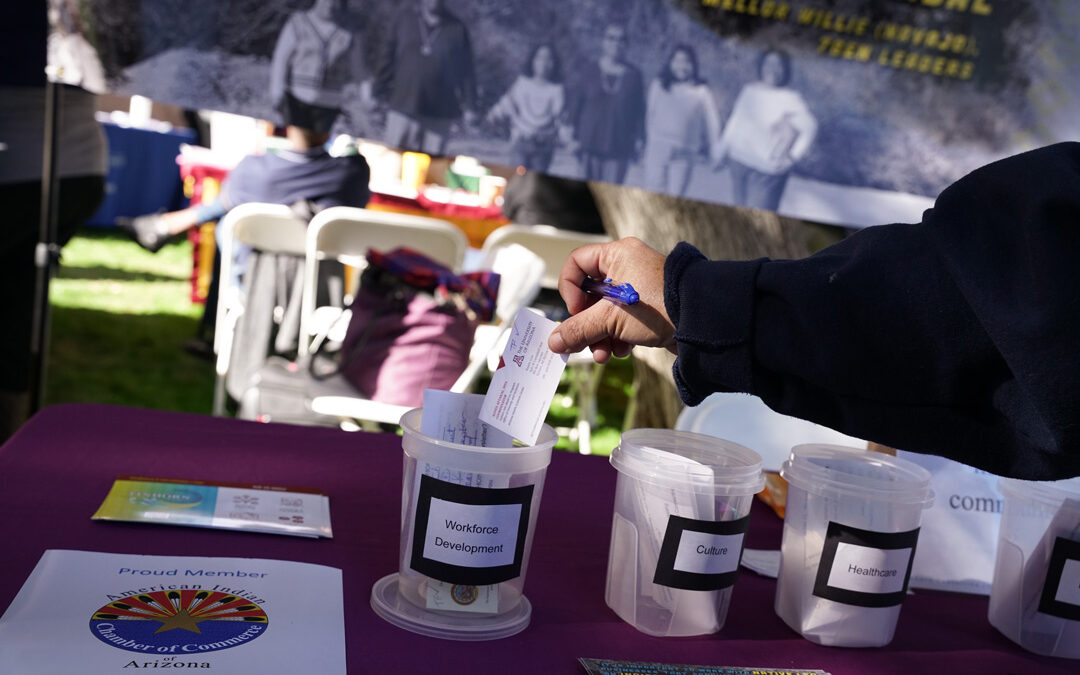
by Tinhorn Consulting | Mar 20, 2023 | Native Issues
We, as Native people, often deal with systemic problems that can seem overwhelming. Problems can often seem like a broken record, stuck in one place and unable to move forward. How can we, as Native people, move that needle? That is the question I asked myself at the beginning of this new year.
As a business owner working with tribal clients, I wanted to know: What are the most pressing issues facing Arizona tribal communities and organizations? And, how can Tinhorn Consulting help tribal entities move that needle forward?
To gain insight into Arizona’s tribal landscape of needs/priorities, Tinhorn Consulting recently conducted a random polling of issues, voted on by attendees at the 2023 Arizona Tribal Legislative Day at the Arizona State Capitol. Included among the participants were tribal leaders, nonprofit organizations, and general tribal attendees.
Tinhorn identified 7 general categories – healthcare, youth, culture, workforce development, infrastructure, education and elders – from which participants chose an overall number one priority. In addition to voting for one issue each, participants were asked to evaluate how Tinhorn Consulting’s services – – strategic planning, training and facilitation, marketing, and tribal connecting – – might help them tackle their issue.
The top issue receiving the most votes was infrastructure with 22%. The next two top votes – workforce development and education – tied at 17%. The rest of the issues received the following percentage of votes:
Culture: 14%
Healthcare: 12%
Youth: 9%
Elders: 9%
Admittedly the results initially surprised me. However, as participants explained why infrastructure was a top choice, they cited the broad need for internet connectivity, electricity/power, and access to services for the elderly. Basic services that can help support and lead to solving other problems.
Makes sense! Now, how to get to a solution? How can Tinhorn Consulting help move that needle forward?
Arizona tribal voices spoke up and voted for their top choices. Answers revealed in Part II of this blog. Stay tuned!
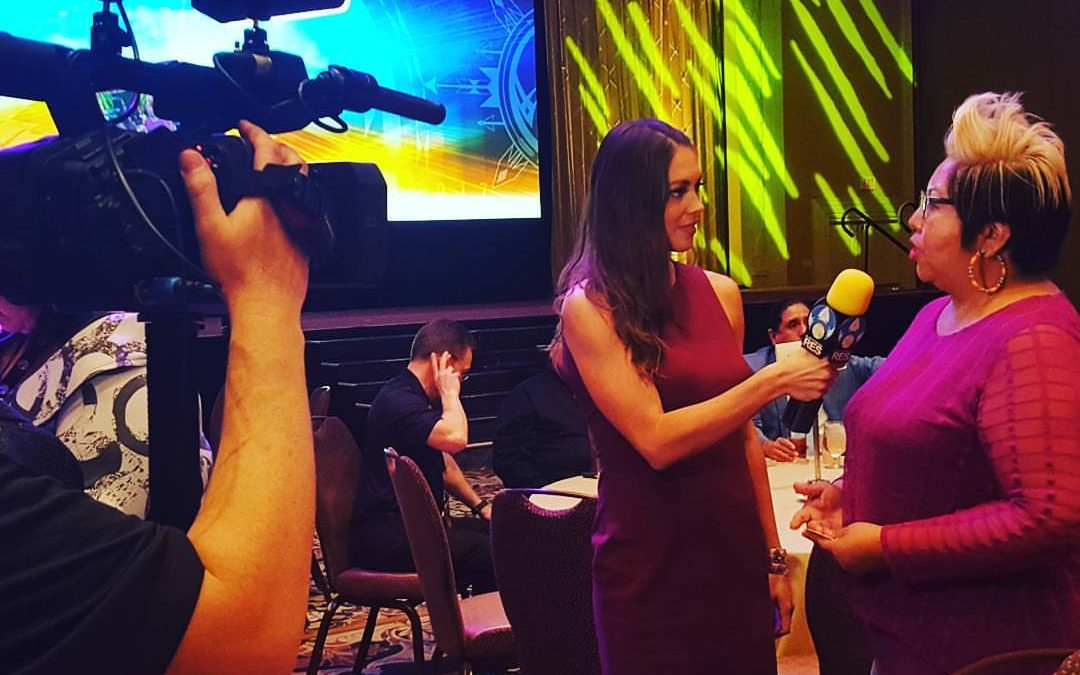
by Tinhorn Consulting | Oct 19, 2021 | Entrepreneurship, Women Warriors
It all began with an unplanned visit to the Smithsonian “Girlhood (It’s Complicated)” exhibit which commemorates women suffrage and how girls changed history in the five areas of education, work, health, news and politics, and fashion. Each milestone display spoke of opportunities for girls being delayed or absent in these five key areas until there was a breakthrough. Slowly, I began to connect the dots as to why Native women are paid only 57 cents for every dollar paid to White, Non-Hispanic men.
While there were Native American women included, there were only five pieces in the entire exhibit which consisted of hundreds. So, here is my #thisiswhatyoumissedsmithsonian list! Each lady featured has broken barriers in at least one of the five exhibit key areas and made their mark within and beyond Indian Country.
“Americans have claimed girls’ bodies as community property.”
Education
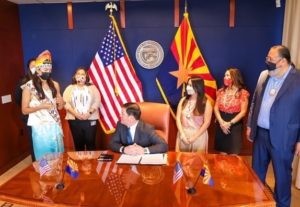
Lourdes “Lulu” Pereira. Photo by Ms/Mr. Indigenous ASU Committee on Facebook.
I first heard about Lulu, now Miss Indigenous at Arizona State University, when she was fighting gender and racial discrimination at her high school graduation. She was banned from attending graduation because she wanted to wear her tribal regalia to the ceremony. This reminded me of the “Girlhood” Smithsonian exhibit and how school dress code policies are targeted primarily towards girls. Restricting the expression of young girls’ clothing, especially when it promotes their cultures, takes away their independence and identity. Since then, Lulu has been instrumental in changing policies so that school graduation dress codes are more culturally inclusive first in her own school district and now state-wide. Her advocacy and activism in academic institutions reminds us that representation does matter. Follow her journey at the Mr. and Ms. Indigenous at ASU Facebook Page.
Inspired by Lulu?
If you’re interested in starting or returning to a college experience that is culturally grounded, Tohono O’odham Community College is now extending free tuition for all Native American students affiliated with federally recognized tribes.
Work
Featured Indigenous female disrupting work barriers: Kamia Begay (Diné) of Nizhoni Soaps
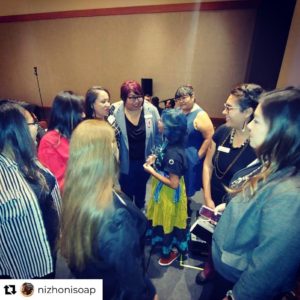
Kamia Begay. Photo by Nizhoni Soaps.
Currently 13 years old, Kamia is, to our knowledge, the youngest Native girl soap boss to own three brick and mortar stores spanning across the Arizona and New Mexico state lines. I first met Kamia at the American Indian Chamber of Commerce of AZ holiday luncheon. I remember her thanking me and the other entrepreneurs for being women she could look up to as Native women business owners. I am proud of her because she had the courage to open up her brick and mortar stores during the pandemic. Her story touched a special place in my heart, too, because she’s on this business journey with her mom. You can purchase Kamia’s skincare online at www.nizhonisoaps.com or at her three stores located in Farmington, NM; Albuquerque, NM, and Mesa, AZ.
Motivated to be a boss babe like Kamia?
Follow @NativeWomenLead to learn more about funding opportunities and to be in the know about the #EqualityCantWait Challenge!
Health
Featured Indigenous female disrupting health barrier: Sareya Taylor (White Mountain Apache and Diné)
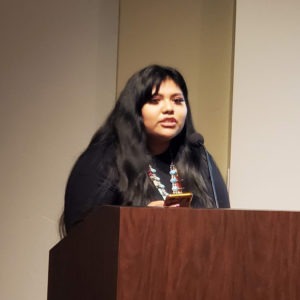
Sareya Taylor.
Sareya was the Inaugural Youth Poet Laureate of Phoenix. I had the privilege of hearing her read some of her original pieces at the Heard Museum. Sareya’s warrior spirit came through as her poetic flow painted images of urban Native experiences with pride. I am inspired by Sareya’s activism and how she uses her words to bring light to silent issues that impact our communities like mental health.
Uplifted by Sareya?
Learn more about Sareya by watching the Eat, Learn, and Grow episode “Words Matter” https://youtu.be/MckpT3mnVGY
If you or someone you love is being affected by domestic violence or is in need of mental health support, please contact the Southwest Indigenous Women’s Coalition at www.SWIWC.org.
News + Politics
Featured Indigenous female disrupting news + politics barriers: Alyssa London (Tlingit)
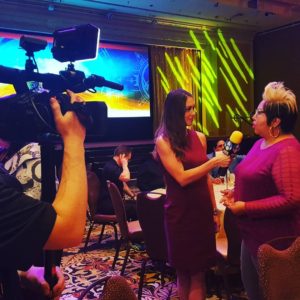
Alyssa London. Photo by Tinhorn Consulting.
I first learned about Alyssa on social media as she was the first Alaskan Native to win the Miss Alaska Pageant. She was an interesting combo of Standford grad, former Microsoft employee, and Culture Story business owner. In other words, someone I’d like my little girl to know of as a fellow bi-racial Indigenous female breaking cycles. Call it “like attracting like” as I had the pleasure of getting to know Alyssa when she interviewed me at the Reservation Economic Summit and later cheering her on in person as she competed for the Miss USA Pageant in Las Vegas, NV. She stunned the audience in a beautiful red Tlingit designed gown during the evening gown competition. Alyssa would later replicate the full sized dress for Barbies which she gifted to my Zoey. Her children’s book “Journey of the Freckled Indian: A Tlingit Culture Story” resonates with my daughter and I as we are also biracial. Her work reminds us how important representation is, especially for young Native girls. You can listen to Alyssa on Native America Calling and catch her as an FNX TV show host.
Want to change the narrative like Alyssa?
Learn more about Alyssa by watching the Eat, Learn, and Grow episode “Taking Risks to Follow Your Dream” https://youtu.be/FNo0Rmzpdko
Fashion
Featured Indigenous female disrupting fashion barriers: Valentina Aragon (Diné) of ACONAV
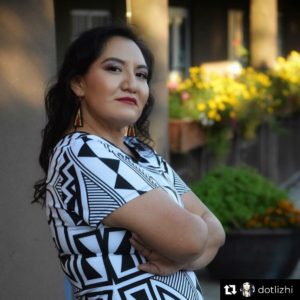
Valentina Aragon. Photo by Dotlizhi.
The blended identities and cultures of Valentina and her husband Loren (Acoma Pueblo) make ACONAV what it is. Their high-end Indigenous fashion has been recognized and featured across Indian country and beyond. ACONAV has walked the Phoenix Fashion Week, won Phoenix Fashion Designer of the Year, and a custom design has even been commissioned by Disney! “Evoking the Empowerment” of women is a conscious choice which has ripple effects into our next generations. I’m also impressed by the notion of working with your partner and mother-in-law. The success they’ve achieved is a testament to the importance of healthy relationships and kinship.
Inspired to be a fashion disruptor like Valentina?
Shop couture or ready-to-wear styles at www.aconav.com.
“American citizenship is not always desired. As members of sovereign, independent nations, American Indian families raised girls to pass on their languages, values, and traditions. In response, U.S. educators physically removed girls and boys from their homes and communities. These educators wanted to erase Indian cultures. And, yet again, the key target was girls because Anglo educators also believed girls would raise the next generation.”
This topic made me pause and give thanks and appreciate all the grandmothers who came before us to fight for saf(er) spaces in education, work, wellness, politics, and fashion. We have a ways to go, but it continues with young women like this and sharing their stories. As a mother, that’s our responsibility, just like my mother did for me. We all came from a woman and must have respect for women. No matter your gender, the way we treat and support Native women impacts our present and future as we raise the next generation.
Inspired to take action towards wage equality?
- Buy Native
- Promote Indigenous Women in the Workforce
- See something, say something
- Mentor
- Listen
- Share this blog
Sources:
Smithsonian “Girlhood: It’s Complicated” Exhibit
https://www.si.edu/exhibitions/girlhood-its-complicated-event-exhib-6376
https://piper.asu.edu/nea-big-read/partners/lourdes-pereira
https://www.nizhonisoaps.com
https://youtu.be/MckpT3mnVGY
https://alyssalondon.com
https://youtu.be/FNo0Rmzpdko
https://www.aconav.com

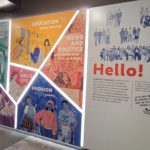
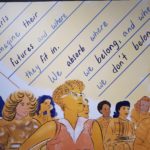
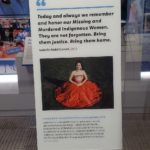

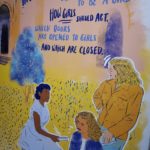

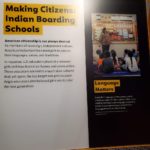
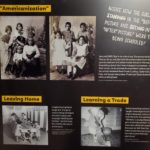
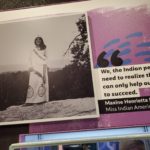
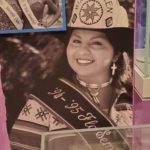
—
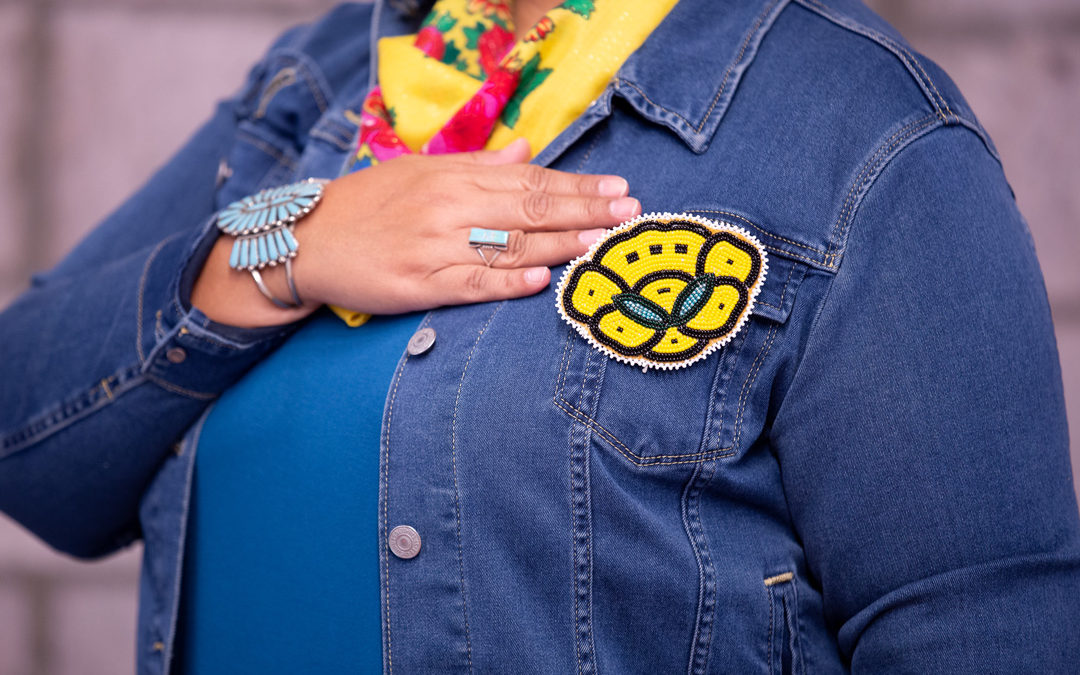
by Tinhorn Consulting | Nov 4, 2020 | Entrepreneurship
TINHORN’s Gratitude Checklist
-
Start your day by saying “Please.”
-
Next, say out loud three (3) things that you are grateful for
-
Keep a daily gratitude journal or add an AM and PM gratitude check-in to your daily planner
-
Check if you’re in H.A.L.T. (Hungry, Angry, Lonely, Tired) and take care of those needs STAT.
-
Be kind in thoughts and actions to yourself and others.
-
End your day by saying “Thank you.”
This month, TINHORN is celebrating gratitude. For our Indigenous heritage and for our freedoms. On my mind today more than anything is our freedom of choice. Growing up on the Hualapai reservation, I saw myself as a member of my community and as a Native American. It wasn’t until I worked on an Air Force base in Germany as a civilian computer scientist that I realized there were so many freedoms at home that I took for granted. Don’t get me wrong, our nation is far from perfect. But that’s the beautiful thing about it: we have choices and can use our voice through community action, social media dialogue, and voting to make things better for Native people and “something other(s)” who are often forgotten.
The best way to stay grounded is by practicing intentional gratitude. Whether you prefer meditation, journaling, or community service, staying grateful is key to sustaining oneself through uncertain times. No matter the outcome of the elections or world events, let’s make an intentional choice to stay grateful. Let’s show gratitude for the strength of our ancestors and live a life of gratitude as we make the future a better place for the next generation.
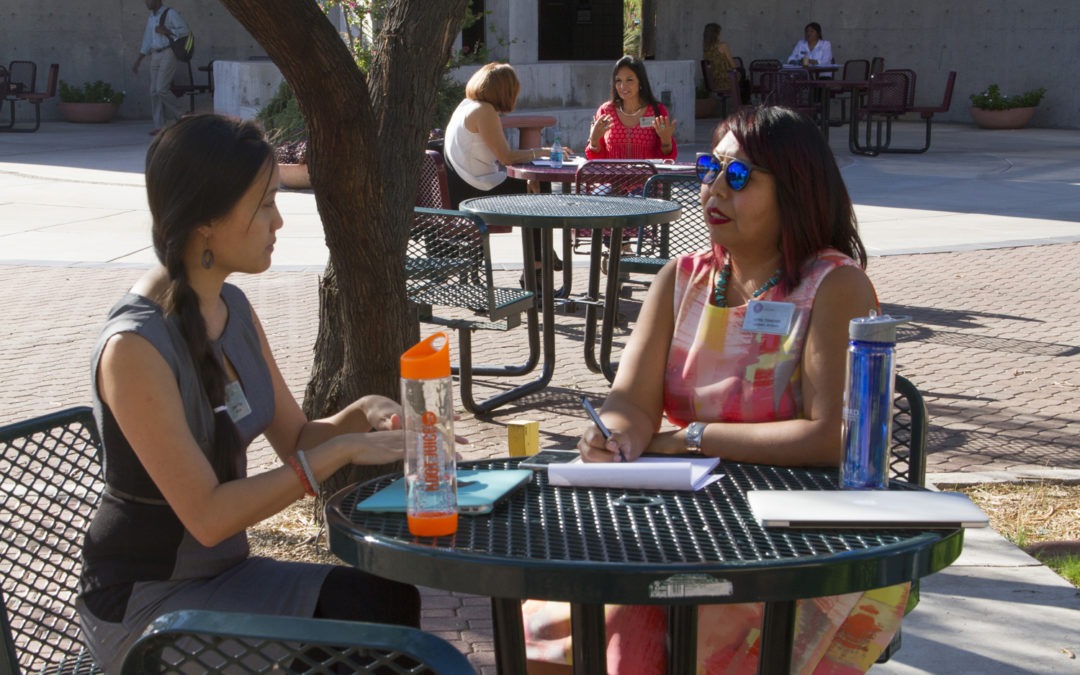
by Tinhorn Consulting | Feb 5, 2019 | Entrepreneurship
In the horse racing world, the “triple crown” refers to a rider/horse winning all three of the top major races — Kentucky Derby, Preakness, and the Belmont. When I work with a client, I too seek a “triple crown” win — an opportunity that will benefit Native communities; achieve the client’s goals; and uphold my business mission.
It all begins with listening.
What are the client’s intentions?
What is the benefit or value to client and target audience? Will it make a difference?
How can Tinhorn Consulting help remove obstacles that may hindering the client from accomplishing their goal(s)?
Helping others expand their outreach to benefit Indian Country is a significant part of Tinhorn Consulting’s portfolio. When Tinhorn Consulting works with you, we can provide in-roads into tribal communities to get to the right audience; we’ll maximize opportunities to elevate your outreach efforts; and, utilize long-established relationships to reach a broader base of participants.
For example, over three years ago the Manager of Project DreamCatcher, a new entrepreneurial training program for Native women, approached me as the program needed help to attract eligible applicants to meet enrollment goals. The program was developed and launched by the Freeport-McMoRan Foundation, in partnership with Thunderbird for Good (Thunderbird School of Management), to offer free business training to Native women entrepreneurs from four specific tribes — Hualapai, San Carlos Apache, Tohono O’odham and White Mountain Apache — as a way to invest back into the communities.
For Project DreamCatcher, it boiled down to basics — establishing trust. And those who work in Indian Country know trust is critical. We built trust with in-person outreach activities in each tribal community; I utilized my existing relationships to spread the word and encouraged the Native women entrepreneurs I knew to apply; and, Tinhorn Consulting created the branding and social media community management.
I’m happy to say for that first year, the program met its enrollment goals and retained Tinhorn Consulting’s services going forward. 32 Native women in two cohorts have benefitted from this program, including myself, and with encouragement to expand its impact, the 2019 program is now accessible to business women from the Navajo Nation.
Does your business believe in triple wins? Contact Tinhorn Consulting to set up your 15-minute consultation to explore your outreach needs.
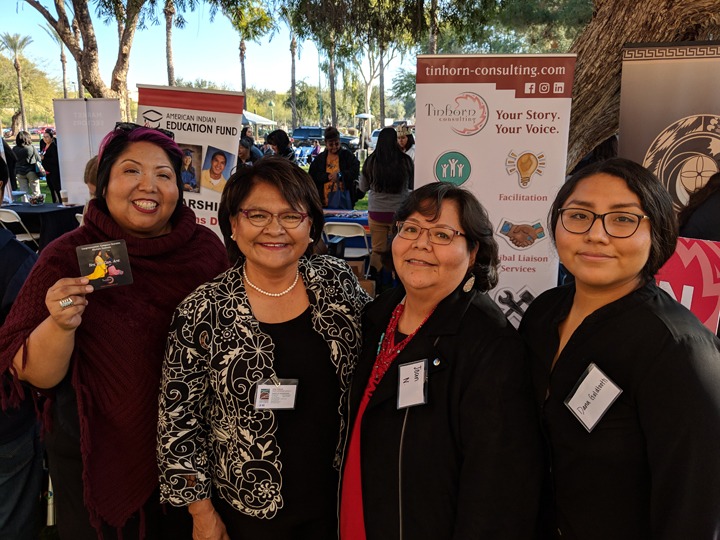
by Tinhorn Consulting | Jan 17, 2019 | Web Development
As I talked shop at the 24th Annual Indian Nations and Tribes Legislative Day at the Arizona State Capitol with Arizona Tribal leaders and varied constituents, I heard over and over that websites are a necessary tool to convey information and to attract business interest. Whether you’re a tribal government, small business owner, educator or non-profit, often the first introduction to information about you is through your official website. Yet, websites can be challenging to maintain and update.
In 2019 it still holds true that:
- Native small business start-ups need a website to get a foot in the door and introduce services and products;
- Even established industries like entertainment often desire revamped websites to appeal to customers;
- Small firms often don’t have the time to upgrade websites to be more professional and informative;
- Specialized service industries need motivational or targeted messaging to improve outreach;
- First impressions are important, which is especially true in business. In this digital age, often the first step to introduce information is through a website.
Every industry, including those in or working with Indian Country, are reliant on accessibility, particularly accessing information through mobile devices and tablets.
Website design and management is a pillar service of Tinhorn Consulting. We bring cultural responsibility, education, and experience to your website projects:
-
Cultural Responsibility
From participating in tribal language preservation conferences to volunteering Native Women Entrepreneurs group, our team lives and works in Indian Country.
-
Education
Unlike others, our project manager has a Master of Science in Computer Science and our web lead has an MBA combined with 15 years of software development.
-
Experience
Our team has over 25 years of combined web design and programming experience in the federal/tribal government, business, academic, and non-profit sectors.
As a new year begins, as you take steps to improve facets of your life, don’t forget to take steps to improve your business. Tinhorn Consulting is ready to work with you to revamp your website to look more professional, be informative and authentic, and even ‘indigenize’ it! Our website check-up package includes inspecting for broken links/images, ease of use, organizational and search tips, and ensuring your site is informative and device-friendly.
Ready for a website makeover? Schedule a complimentary 15 minute mini-consultation and let’s get started!
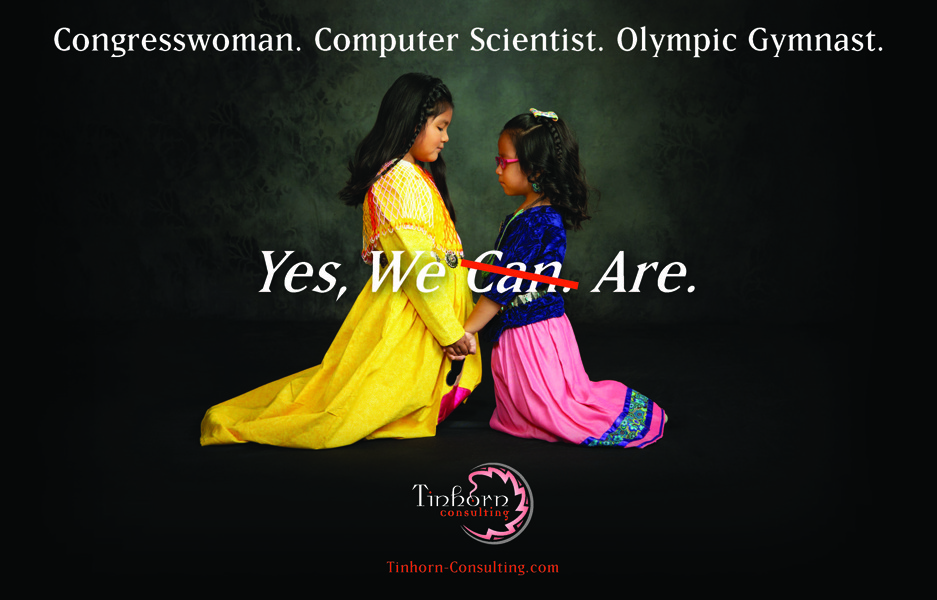
by Tinhorn Consulting | Dec 23, 2018 | Entrepreneurship, Training, Women Warriors
What an amazing year 2018 has been for Native women! I am proud to say that my daughter Zoey is growing up in a world with Native role models whom ARE Olympic gymnasts, computer scientists and elected U.S. Congresswomen. These accomplishments are a reality today for our Native people — and my daughter’s ambitions are not pie-in-the-sky dreams, they ARE achievable.
Everyday I encounter Native women transcending gender inequalities. By shattering the glass ceiling, they are introducing my daughter to a world of possibilities.
She could be an international award-winning architect like Wanda Dalla Costa of Redquill Architecture from the First Nations in Canada.
Or an economic empowerment thought leader like Vanessa Roanhorse of Roanhorse Consulting from the Navajo Nation.
These Native women ARE putting their own stamp in the world and making a difference for indigenous communities, which is a shared vision with Tinhorn Consulting, LLC.
From the local to national to international, in 2018 Tinhorn Consulting LLL was called upon to:
-
Open doors for Native political candidates. By working with 7Gen Leaders, Tinhorn Consulting helped with brand identify and marketing collateral for the launch of this new organization that helps elect leaders that are making decisions that will have positive impacts on generations to come.
-
Invest in Native Business women owners and entrepreneurs. Tinhorn Consulting LLC is at the forefront of initiatives like Project Dreamcatcher that offers free business training to Native women business owners; Tinhorn Consulting participated in an inaugural business summit of Native women business owners and leaders; and, collaborated with Cherylee Francis of Native Women Entrepreneurs of Arizona to present at a global trade summit in Mongolia, opening doors for Native businesses at an international level.
-
Support the next generation of Native business leaders. Tinhorn Consulting proudly participated in educational events for UNITY, Arizona State University and others to encourage students interested in business and entrepreneurialism, providing helpful tips and experiences unique to Indian Country.
-
Improve business leadership and management for tribal organizations. Organizations such as the Inter Tribal Council of Arizona’s Good Health and Wellness In Indian Country and the United Southern and Eastern Tribes (USET) sought Tinhorn Consulting’s training and facilitation expertise to address barriers impacting progress and communication.
-
Make connections to and within Indian Country to address disparities. Tinhorn Consulting worked with the Arizona Community Foundation and tribal non-profit leaders to discuss strategies to increase participation of tribal communities in philanthropy; and, assisted Care1st to improve outreach and understanding of disparate health care needs and access in Indian Country.
2018 has been called the Year of the Woman; the same is true for Native women. This is my daughter’s world and I tell her everyday to do whatever makes her heart sing. With the positive Native role models around her, she and Native women everywhere ARE and WILL lead in political leadership, business, science and more.
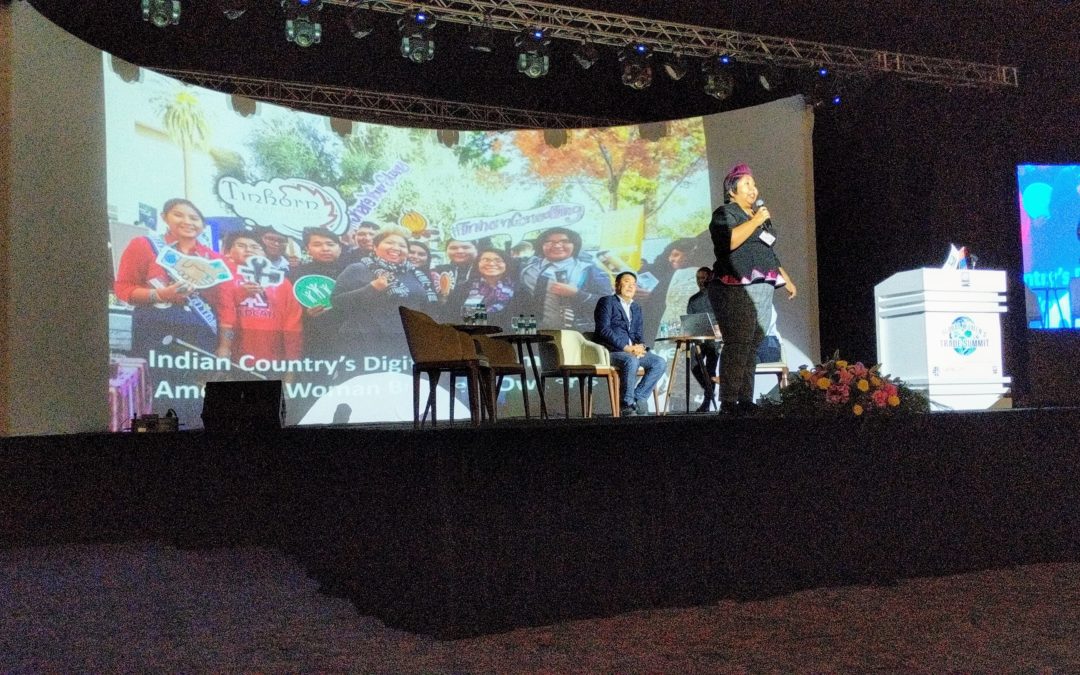
by Tinhorn Consulting | Sep 28, 2018 | Training
Eight years ago, as I was just starting my own business, I had a distinct vision. I could visualize myself on an auditorium stage in front of a large crowd. I didn’t know exactly what my role was, except that I knew I had a purpose and a message.
Eight years later, my vision came true.
Earlier this month, I presented at a global women’s conference in Ulaanbaatar, Mongolia, as one of two featured Native American speakers representing Native women business owners. The International Federation of Women in Commerce and Industry (IFWCI) invited Tinhorn Consulting, LLC and the Native Women Entrepreneurs of Arizona to share information about the digital economy and industry in Indian Country before an international audience.
It was an eye-opening experience on many levels.
First, when I started Tinhorn Consulting, my goal was to help change perceptions of Native people, by telling our own stories in our own voices. While in Mongolia, I was startled to hear the misperceptions about Native American people. Many believed Native Americans no longer existed. Others, while not intending to be negative, referred to us as the “Red Indians.” I was quick to say that Native people are still very much alive and thriving, and identified myself as a proud Hualapai woman. Everywhere I went, I encountered curiosity. I realized that even as Native people still encounter stereotypes in our own backyard, there are also global misperceptions that also must be addressed. Native American people are very much a part of the world economy and many other people around the world are curious and ready to work with us.
Secondly, as I counted my own blessings to be a part of a global economic dialogue in Mongolia, I recognized I owed the chance to connections. I would not have had the opportunity to be a part of such an event without the connection I first made with Cherylee Francis of the Native Women Entrepreneurs of Arizona. That connection led me to being a part of the IFCWI conference, which in turn presented me with a range of additional opportunities that I hope will come to fruition. For the Native businesses out there….connect, engage and you will achieve.
Finally, I thought about the evolution of my business, especially as I celebrated the 8th anniversary of Tinhorn Consulting on September 10th. My initial foray as a small business owner had focused on web development but has since expanded into training, facilitation, marketing, tribal liaison services and more. And now I add public speaking as part of my portfolio. I want to participate, not only in local events, but also on a global stage, to speak about the creativity and innovation of Native people and the opportunities to partner with Native businesses. Tinhorn Consulting has blossomed over its eight-year history and I’m ready to go to the next level.
My vision has realized. I’m ready to take the stage.
Do you have an event and need a public speaker? Ready to book your Tinhorn Consulting speaking engagement? Use our contact form and let me help you meet your educational and outreach goals!

by Tinhorn Consulting | Jul 19, 2018 | Training
For a brief time in my life, I was gifted an opportunity to be a educator, teaching basic computer skills to community college students. It was an enlightening experience, especially as I was the one who learned valuable lessons and skills in the process. What I learned is that it isn’t enough to share knowledge, or to speak at the students. I had to open myself to the students, to be present in their educational journey and engage with them and earn their trust.
Now I apply these lessons in my business. At Tinhorn Consulting, a key part of our business focus is to develop and implement training workshops for tribal entities and community partners. Because of our focus on Indian Country, our workshops are uniquely balanced to be respectful of cultural sensitivities and values.
My rule of thumb is that trainings ought to be informative, applicable to your business needs, and gratifying, i.e. “fun.” Participants in our workshops are engaged from beginning to end. We start with interactive icebreakers, identify consensus ground rules, apply concepts to real-world situations, and conclude with presentations by participants to share their learned knowledge.
Whether you’re the employee, manager or CEO, we all need a little help to hone our skills, improve communication and efficiency, or stay abreast of the latest in technology. Whatever your professional development needs are, Tinhorn Consulting can work with you.
Ready to book your 15 minute mini-consultation with Tinhorn Consulting to schedule your training session? Let’s get started!
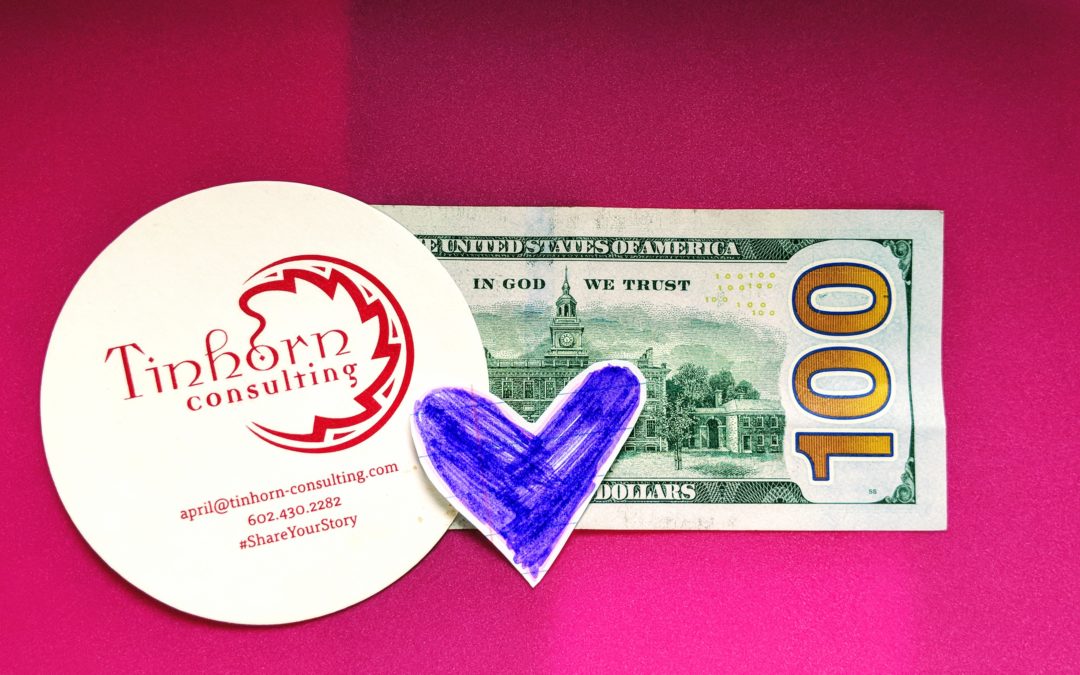
by Tinhorn Consulting | Jun 13, 2018 | Entrepreneurship
Like any entrepreneur, I’ve had to learn by trial and error. Business owners, especially upstarts, are constantly exploring, throwing out a wide net to attract clients.
When I started my business, I was in earnest pursuit of new clients. Uncertain yet determined. Hungry.
When an acquaintance approached me about a possible website development contract, of course I leapt at the opportunity. Back then I didn’t vet potential clients as I do now. I didn’t have a long client roster but I had a mission for my business – – to work with Tribal communities and to positively change perceptions of Native people across a variety of platforms.
At first glance, the proposal to develop a website was exactly in my wheelhouse and I was eager to begin. I didn’t ask enough questions before the meeting with this potential client; therefore, when the prospect was laid out for me, I was astounded. The proposal was to develop a website featuring young Native American women wearing scant clothing in various provocative poses on hot rod cars.
As a Native woman myself, I was immediately unsettled. As a new business owner, I was conflicted. This was ‘just business,’ after all. Still I had to ask myself whether I could set aside my own personal values in the name of business. Could I be bought?
I thought about what I wanted Tinhorn Consulting to represent. Did I want my company’s name to associated with this type of project? The answer was quickly clear. This was not in harmony with my company’s mission. No payment was worth it if I could not be proud of the end product.
Why am I blogging about this now? As a Native woman business owner for several years, I am often invited to speak to Native American students and young entrepreneurs. I participate in Tribal business summits and meetings locally and nationally. I like to share my story of how I got started as a business owner and the lessons I’ve learned along the way.
Above all, I promote positivity for Indian Country, especially for Native women. Yet, business can be trying at times. Entrepreneurs can often face situations that may fall into a grey area. As I learned myself, it’s important to vet any potential client and ask detailed questions.
What helped me back then, and still guides me, was my mission statement. My business may have evolved over the years but my mission is unchanged.
For those working in Indian Country, we know it can be small place. Reputation and values are important. Nothing is truly ‘just business’ for me when it comes to Indian Country. I want my work to be meaningful, respectful and to celebrate Native culture. Above all, I want my daughter and community to be proud to see Tinhorn Consulting’s logo.


























